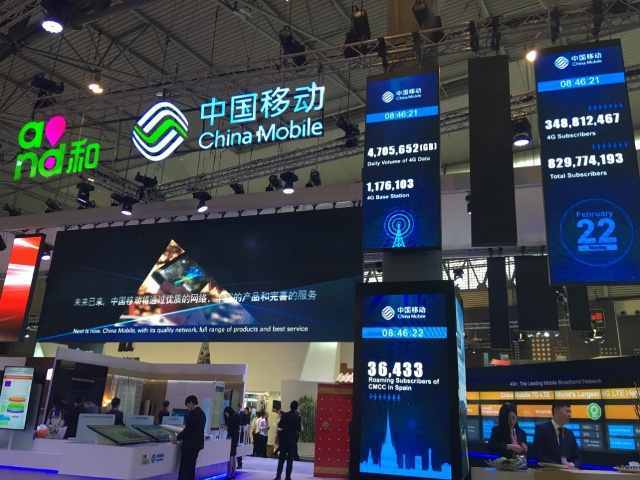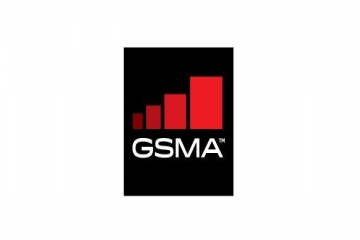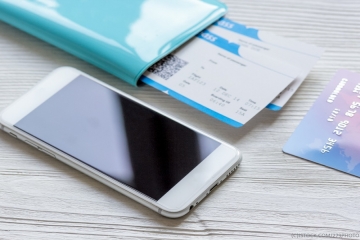MWC 2016 Shanghai: 4G, 5G, IoT, smart city in Asia
Telecom network and software makers such as Nokia, Ericsson, ZTE, HPE, Cisco, Huawei, among others, focused primarily on 4G / LTE, 5G, IoT and smart city solutions.

A thriving Asian market
Telecom network vendors are giving more thrust in Asian markets because telecoms will be investing more in advanced technologies to connect 3.1 billion mobile subscribers by 2020 against 2.5 billion in 2015, according to a new GSMA study.
Asian economies are benefiting from mobile technologies and services that made up 5.4 percent of Asia Pacific’s GDP last year, equivalent to $1.3 trillion in economic value; this economic contribution is set to increase to $1.7 trillion by 2020, says GSMA.
GSMA Director General Mats Granryd said: “Rising subscriber penetration, alongside accelerating migration to faster networks and more advanced services, continues to fuel innovation and digitisation across both advanced and emerging markets in this highly diverse region.”
Asia Pacific will account for 60 percent of the 1 billion mobile subscribers that will be added to the global total by 2020, with the region continuing to add subscribers at a faster rate than the global average.
The four largest markets in the region – China, India, Indonesia and Japan – together accounted for more than three-quarters of the region’s total subscriber base. India alone is expected to add nearly 250 million new subscribers by 2020.
Mobile broadband — 3G / 4G network — accounted for 45 per cent of total mobile connections in Asia Pacific last year, forecast to rise to 70 percent by 2020 as operators continue to invest in 4G network build-outs and subscribers migrate to higher-speed networks. 4G is on track to account for more than a third of total connections in Asia Pacific by 2020.
Highlights from keynotes
GSMA organized several keynote sessions during the MWC 2016 Shanghai.
China Mobile CEO Li Yue said the company aims to boost its 4G user base to 500 million by the end of the year, taking penetration above 60 percent three years after its LTE launch. China Mobile will add another 100,000 4G base stations this year, taking its total to 1.4 million. China Mobile expects that LTE subscribers will represent 60 percent of the telecoms subscriber base by the end of the year.

China Mobile's booth at MWC 2016
China Mobile also announced plans to launch commercial voice-over-LTE services in more than 300 cities across China this year, adding that the carrier is looking to sell more than 1 million VoLTE smartphones this year. He also predicted total connections in the Chinese market to reach 5 billion by 2020.
SK Telecom CTO Alex Jinsung Choi shared SK Telecom’s 5G vision, stressing that the 5G system will make people’s lives safer, more efficient and more pleasant/interesting by offering personalized and customized services based on open platforms unlike the former generations of the mobile networks.
SK Telecom announced partnership with Deutsche Telekom and Ericsson for developing 5G core network.
NTT Docomo CEO Kazuhiro Yoshizawa said the company expects its Premium 4G LTE service to reach speeds of up to 500 megabits per second early next year. The Japanese company’s revenues are trending five to ten years ahead of its global peers.
Focus areas
Major telecom operators, mainly from Asia discussed the next wave of mobile network and service innovations including 5G, ways to deliver richer content and services, and the scope of the Internet of Things in various sectors.
One of the sessions focused on IoT applications becoming accessible to all citizens. With increasing network adaptations and IoT implementation and research industries such as utilities, manufacturing or banking, having started to incorporate IoT solutions to improve efficiency, customer care and improve lives, this discussion centered on challenges faced in delivering mobile broadband and effect of the technology on Enterprise IoT business case.
.jpg)
China is currently the world’s largest M2M market
GSMA says China’s machine-to-machine (M2M) market will reach one billion connections by 2020, with the majority coming from the developing Low Power, Wide Area (LPWA) market. China is currently the world’s largest M2M market with approximately 100 million cellular M2M connections, a figure that is expected to increase to 350 million by 2020.
5G in Asia
GSMA says Asia Pacific had 76 live 4G-LTE networks and 20 live VoLTE networks in 2015. South Korea, Japan and China are driving the development of 5G mobile technologies in readiness for deployments before the end of the decade.
With the first commercial trials in Japan and South Korea anticipated to begin by 2018 and 2020 to coincide with the FIFA World Cup and Tokyo Olympic Games respectively, the Asia Pacific region claims to play a major role in the 5G deployments.
With 10 times the speed of current 4G network, much lower system latency and improved spectrum and signalling efficiency, 5G is believed to offer huge capacity for operators. Evolving the existing mobile broadband business model to take advantage of these enhancements will prove vital to justify the investment that will be required in order for 5G to resonate with consumers. Technologies like the IoT and NFV will need technologies like 5G to meet the connectivity requirements. This was the topic of discussion with details on the latest 5G trials and updates on its deployment plans in the Asia Pacific region also revealed.
Smart city in Asia
Telecom research forecasts that annual smart city technology investment in Asia Pacific will almost quadruple by 2023, reaching $11.3 billion. Sessions at MWC 2016 Shanghai focused on the role of operators and telecom industry for achieving better results and examples of successful projects in Asia Pacific region.
Telecom operators from all developed and developing countries have realized the significance of digital transformation. However, due to the lack of sophisticated strategies and clear direction, operators are struggling on the transforming path. Digital Transformation Forum, co-organized by GSMA and China Academy of Information and Communications Technology (CAICT) discussed the opportunity and challenges that mobile operators are facing during digital transformation.
The MMIX Asia Summit was a series of GSMA-led events that joined value chain leaders and innovators to explore, engage and enhance the global mobile entertainment experience. The MMIX Asia Summit put forth opportunities and challenges for the mobile film, TV & broadcast, video, brand and media sectors.
Hosted by GTI, GTI Summit · Shanghai 2016 promoted TD-LTE global development, to propel 4G evolution and to develop a 5G ecosystem. It discussed the opportunities brought by 5G cross-industry innovation and views for the progress of Internet of Things, Internet of Vehicles, Smart Home, etc.
Cisco sponsored IoT Tour. The Internet of Things (IoT) was the focus of this session with millions of new devices to be connected, in the coming year and a half. The pros of major IoT applications were on demonstration.
Telecomlead.com




